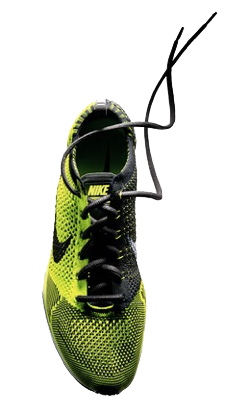Nike is #1 on the list of the top 50 innovative companies just released by Fast Company.
Twitter and Facebook are not, though they have been frequently in the past. Taking a look at some of the reasons helps spotlight what makes a company a top innovator, and when it’s not in the cards.
As Fast Company sees it, Nike brought out two truly innovative products in 2012 – the Flyknit shoe and the FuelBand electronic bracelet. Both represent not just new products but new business models-for Nike, and perhaps for its whole industry. Both products emerge from an innovation system grounded in a super-close connection with customers and an intense focus on user needs. Either product alone could have bumped Nike onto the list.
On the other hand, Twitter and Facebook simply didn’t do anything that innovative in 2012. Both companies were focused on shareholders rather than users, which can put a dent in truly innovative thinking. And they’ve both got some unhappy users.

What make a new offering so innovative?
The Flyknit is not just a shoe; it is, in fact, a new way to make shoes, a new platform, a new manufacturing process. It busts the paradigm of cutting shoe parts from pre-woven material and then assembling the pieces.
As the name suggests, Flyknit shoe uppers are knit as a single unit from yarns and cables. The resulting shoe is extremely light, and it can be microengineered for perfect fit and better durability. The process eliminates material waste and drastically reduces assembly costs. Because it is much less labor intensive, the Flyknit platform positions Nike to win in new markets globally. And because it fundamentally changes the shoe-making process, Nike’s CEO Mark Parker sees it as a technology with “incredible potential, not only within running, but across multiple categories.”
The FuelBand also breaks new ground for Nike. It’s an electronic bracelet that tracks activity throughout the day, with a simple interface. It makes Nike a player in the revolution in personal devices, as they bridge the world of apparel with the digital world.
What lessons can we learn?
First and foremost: form a close connection with your customers, your users. Nike’s CEO Mark Parker is a designer by background, and that sensibility seems to permeate his thinking and his approach.
As he sees it, design is not just what goes into the product – it helps create the strategy for the company. He says, “Good designers are very connected to what’s going on in the world, and that connection needs to be a part of how we shape our strategy with the company.”
Second: Complacency is to be feared and shunned. That’s not so easy to do when you are running a successful company, but it’s a must to continue pushing into risky new territory.
Third: Keep tweaking what you mean by and expect from an “innovation system.” It’s got to be loose enough to allow for messiness and mucking around…and for failures. Nike chucks lots of ideas all the time. But it’s got to be tight enough that it ultimately pulls the best from your enterprise and its networks. That depends a lot on the type of governance process you put in place. Most importantly, the innovation strategy and system need to be deliberate and aligned with your organization’s strategy, and not dependent on legacy processes for product and business development.
Fourth: It’s highly unlikely that any company will be a top innovator for many years in succession. Only seven companies were repeats on Fast Company’s list this year. Of course there’s more competition all the time. But businesses also cycle through different phases that demand attention in different areas. Perhaps it’s a bad long-term sign that Twitter and Facebook have fallen off the list, that they are diverting their games to focus on stakeholders and producing revenue at the expense of user needs. But every company has to face the reality of its own business situation, and decide what its platform for growth will be – extension of current value propositions, creating new value propositions that work within current business models, or creating disruptive innovations that require new business models. (See the November issue’s feature articlefor more on platforms for growth.)


